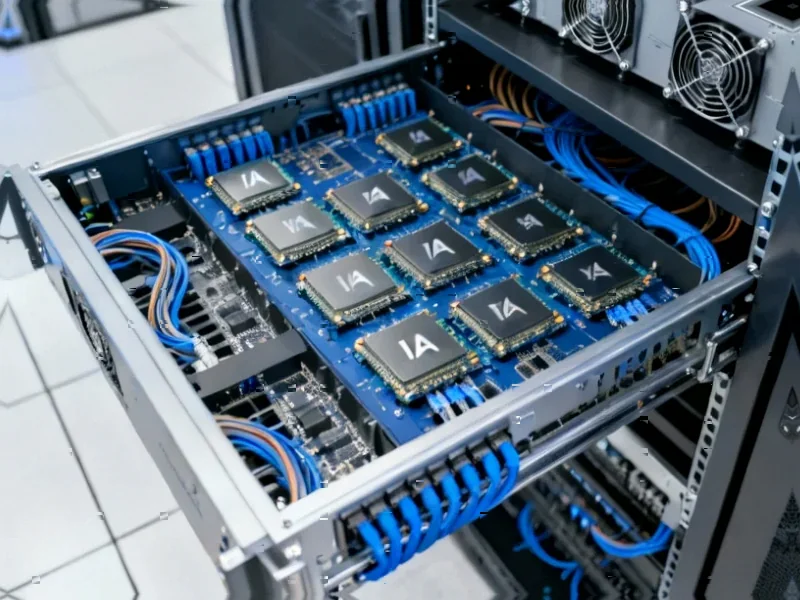According to Bloomberg Business, Nvidia reached a staggering $5 trillion valuation in late October 2024 as investors continue pouring money into the company. The AI hardware leader is projected to report more net income this year than its two main rivals will generate in combined sales. Since generative AI exploded into headlines in 2022, Nvidia has been the primary beneficiary of massive data center investments. Recent months have seen a flurry of multi-billion-dollar commitments that suggest the AI boom is actually accelerating rather than slowing down.
The Unbeatable Position
Here’s the thing about Nvidia‘s current dominance – it’s not just about having better chips. They’ve built an entire ecosystem that’s incredibly difficult to replicate. Their CUDA software platform has become the industry standard, meaning developers are locked into their architecture. And when you combine that with their hardware superiority, you get a situation where even competitors with decent chips can’t break through.
But can this last forever? Probably not, but the runway looks remarkably long. The company’s moat isn’t just technical – it’s about timing. They were years ahead in recognizing that AI would require specialized hardware, and now they’re reaping the rewards. Every tech giant from Google to Microsoft to Amazon is scrambling to catch up, but building competitive AI infrastructure takes years.
Where Are The Challengers?
Look at the competitive landscape right now. AMD and Intel are playing catch-up, but they’re not just competing against Nvidia’s current products – they’re competing against years of software development and optimization. And then there are the cloud providers designing their own chips, like Google’s TPUs and Amazon’s Trainium. The problem? Even they still buy massive quantities of Nvidia GPUs because their custom solutions can’t handle everything.
Basically, we’re witnessing a classic case of ecosystem dominance. It’s not enough to have a chip that’s 20% faster or cheaper. You need the entire software stack, the developer tools, the libraries – everything that makes Nvidia chips actually useful for AI workloads. And that’s what makes this monopoly so resilient.
What Comes Next?
The real question isn’t whether competitors will emerge – they absolutely will. The question is whether they can emerge fast enough to matter. Nvidia’s lead isn’t static – they’re pouring billions into R&D and accelerating their own innovation cycle. Every quarter they’re not challenged effectively just deepens their advantage.
And here’s the kicker: the AI market itself is still expanding rapidly. We’re talking about a technology that’s transforming everything from search to drug discovery to autonomous vehicles. There might eventually be room for multiple winners, but for now, Nvidia owns the entire field. The company’s trajectory suggests we’re looking at several more years of dominance before any serious challenger can mount a credible threat.




